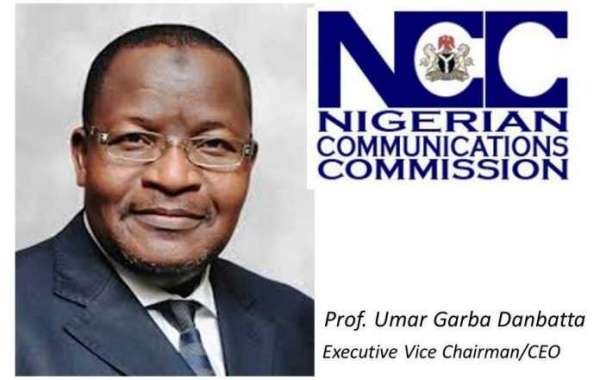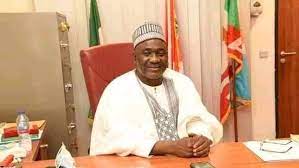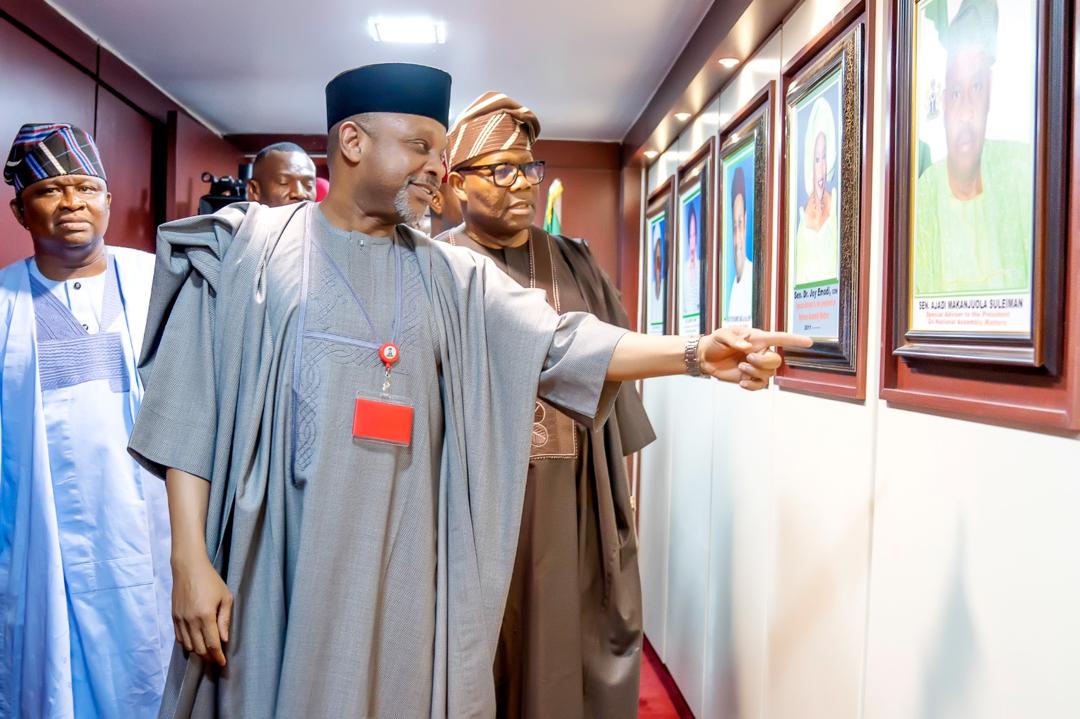News
Nigeria’s telecom access gaps drop by 53.1%

The Vice Chairman and Chief Executive Officer of the Nigerian Communications Commission, NCC, Prof. Umar Danbatta has disclosed that the number of identified areas of clusters across Nigeria without access to the telecommunications services has been reduced by 53.1 per cent.

Speaking at a recent telecoms industry stakeholders forum in Yenagoa, Bayelsa state, he said the number has reduced as at the end of 2022.

Represented at the forum by the Head, Pre-Licensing at the Commission, Usman Mamman, the CEO said from 207 clusters of access gaps in 2013, the industry has witnessed a reduction to 97 as of end 2022 by bridging 110 clusters of access gaps, representing a 53.1 per cent reduction.
In a statement by the Director, Public Affairs, Mr Reuben Muoka which was sent to CAPITAL POST on Wednesday in Abuja, he quoted Danbatta to have said that the number of Nigerians who fell within the access gap which were estimated at 37 million in 2013 has been reduced to 27 million, following increased access to telecoms services by those hitherto not digitally included.
Access gaps refer to the cluster of communities or grouped areas in different parts of the country that are bereft of access to telecom services and till date, the NCC has reduced clusters of access gap by more than half.
Danbatta said, “We have worked tirelessly to ensure we bring telecom services to people living in rural, unserved, and underserved areas of this country, totalling 37 million people courtesy of the consultancy that was conducted in 2013.
“By 2019, we had succeeded in reducing the clusters of access gaps to 114 through the deployment of the necessary infrastructure needed to bring services to people living in rural, unserved and underserved areas of the country. The deployment of infrastructure is in terms of base transceiver stations, which resulted in the reduction of Nigerians in those clusters from 37 million to 31 million in 2019.
“By 2022, we have reduced the clusters of access gaps to 97 from 207 in 2013. The number of Nigerians again have come down from 37 million in 2013 to 27 million as we speak. We achieved this by deploying, from 2009 to 2011, a total of 79 new base transceiver stations,” he said
Danbatta stated that in 2013 to 2018, the telecom sector also witnessed the deployment of additional 124 base transceiver stations while from 2019 to 2022, a total of 364 base transceiver stations were deployed.
“So far, the total number of base transceiver stations we have deployed to date between the time the access gaps were identified till the end of 2022 are 567,” he said.
While describing the reduction in access gap so far as a landmark, Danbatta, however, said the Commission will not rest on its oars as it thrives to ensure that the remaining 27 million Nigerians, who currently lack access to telecoms services, are provided with services.
Meanwhile, the EVC said part the regulatory interventions of the Commission to bridge the remaining 97 access across the country to provide ubiquitous connectivity in all the nooks and crannies of Nigeria are the issuance of the Mobile Virtual Network Operator (MVNO) Licences and the deployment of Fifth Generation (5G) networks, among others.

News
Eid-el-Fitr: Echocho congratulates Muslim community

Senator representing Kogi East Senatorial District, Jibrin Isah Echocho, has congratulated Muslim faithful for the successful completion of this year Ramadan fast, urging them to celebrate the Sallah in love, and unity across our communities.

Echocho in a statement madeavailable to CAPITALPOST in Lokoja o Sunday, described the Ramadan period as stressful, but deserving, because it is the only period for spiritual reflection on abstinence from immorality, sincere sacrifice and supplications to Allah.

He added that, Ramadan symbolises Allah’s way of teaching humanity on virtuous living, where people keep away from all forms of comfort to appreciate what the less privileged experience and deprivation they suffers daily.
He task Muslims to extend the lessons of Ramadan to the way we live with our neighbours.
“Let’s seek peace at all times and promote unity of purpose in our society” the Lawmaker demanded.
“May the celebration brings sustainable peace to our homes, my district, Kogi State and Nigeria, he concluded.

News
Akpabio pays historic visit to office of SA to President on Senate Matters

The President of the Senate, Senator Godswill Akpabio has commended Senator Basheer Lado, for redefining the Office of the Special Adviser to the President on Senate Matters, stating that, for the first time in a long while, the office is fully meeting its expectations.

Speaking during his visit to the office of the Special Adviser to the President on Senate Matters accompanied by distinguished senators, Akpabio described the visit as a significant step in strengthening Executive-Legislative relations.

He praised the Special Adviser and his team for maintaining the confidentiality of communications between the President and Senate, and also, ensuring a seamless flow of information. He further emphasized that the office is now more result-oriented.
Additionally, he acknowledged the office’s diligent efforts in tracking all Bills passed by the Senate and assented to by the President, underscoring its critical role in legislative efficiency.
Expressing his satisfaction, Akpabio noted that he and the Senate delegation were proud of the office’s achievements and looked forward to sustaining the existing cordial and productive relationship between the Executive and the Legislature throughout the administration.
In recognition of his exemplary leadership, Senator Lado presented an Award of Excellence to Senator Akpabio.
In his remarks, Senator Lado reaffirmed his commitment to fostering a harmonious working relationship between the Executive and the Legislature. He lauded Akpabio for his unwavering dedication to President Bola Ahmed Tinubu’s Renewed Hope Agenda—defending it with clarity, articulating it with passion, and advancing it through legislative action.

News
Plateau LP stakeholders endorses Barr Gyang Zi’s defection to APC

Ahead of the 2025 political party Congresses, Plateau State Chapter of the Labour Party (LP) stakeholders has endorsed the defection of the candidate of the party in the 2023 general elections and the leader of Justice and Rebirth, Barr Gyang Zi SAN, to the All Progressive Congress (APC) with the view to key into the Renewed Hope Agenda of President Bola Tinubu.

They made the call in a communique issued at the end of the enlarge meeting of the stakeholders from Plateau North senatorial zone at the residence of Barr. Gyang Zi in Rayfield Jos.

The communique which was jointly signed by Dr. Ayiki Sati Director General, Justice and Rebirth and
Barr. Samuel Galadima- 2024 Chairmanship candidate of Jos East LGA among others said the call became imperative on the sideline of the leadership tussle at the National Level which violates the core principles and values for the formation of the Party as an alternative for Nigeria for the protection, sustenance of democracy and Social Justice.
They regretted that the leadership tussle has also divided the party into factions leaving party loyalists and supporters in the state of despondency and confusion not knowing where they belong.
Our correspondent reports that the gathering included LP candidates from the 2023/2024 general elections, party executives, and support groups from the six local government areas of the Northern Senatorial District.
Besides, the focus of the discussions was centered on the state of the Labour Party at both national and state levels and the need for political realignment ahead of the 2025 party congresses and conventions.
The stakeholders further frowned at the structural weaknesses in LP and resolved to advise Barr Gyang Zi, to leave the party and join the APC while expressing confidence that the APC would provide him with a platform to advance good governance in the state .
The communique also emphasized the importance of political consultations, particularly with APC leaders at both state and national levels. It called for collaboration with Plateau State APC leaders, including Minister of Humanitarian Affairs Prof. Nentawe Yilwatda Goshwe, Sen. Simon Bako Lalong, Sen. Diket Plang, and other party officials.
According to the communique, supporters of Barr Gyang Zi also pledged to mobilize grassroots support for the APC, stating that their leader’s defection would strengthen the party in the state.
They urged the APC leadership to formally receive Gyang Zi and his supporters into the party, marking their official transition from the Labour Party.
Stakeholders also reiterated the need for inclusive governance, ensuring that youths, women, and less privileged individuals are sidelined in the democratic process and accordingly officially denounced their membership in the Labour Party, declaring their support for the APC.
They assured that all LP structures aligned with Gyang Zi would follow suit, shifting their loyalty to the ruling party in the state and at the National level.

-

 Foreign1 week ago
Foreign1 week agoHouthis declare Ben-Gurion Airport ‘no longer safe’ after renewed Gaza fighting
-

 News1 week ago
News1 week agoWhy Christ Embassy’s Pastor Chris holds Abuja mega crusade – Fisho
-

 News1 week ago
News1 week agoUmeh denies receiving $10,000 with other 42 Senators to support state of emergency in Rivers
-

 Crime1 week ago
Crime1 week agoGhana’s anti-drug agency nabs Nigerian drug kingpin, Uchechukwu Chima, seizes $2.1m worth of cocaine, heroin
-

 News1 day ago
News1 day agoKogi Governor, Ahmed Usman Ododo salutes Tinubu at 74
-

 Business1 week ago
Business1 week agoFlutterwave, FIRS collaborate to digitize tax collection in Nigeria
-

 News1 day ago
News1 day agoAkpabio pays historic visit to office of SA to President on Senate Matters
-

 News6 days ago
News6 days agoAgain, explosion rocks gas facility in Rivers





















